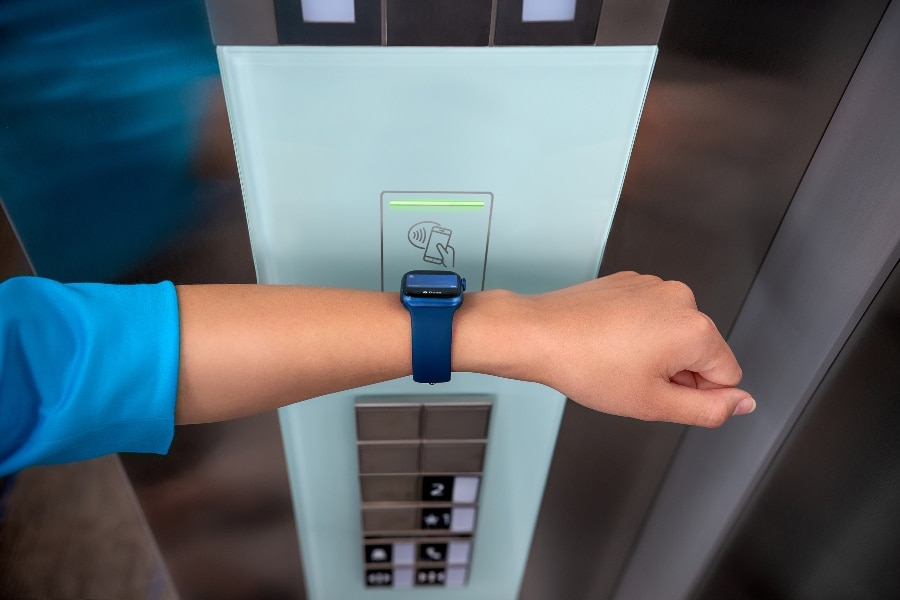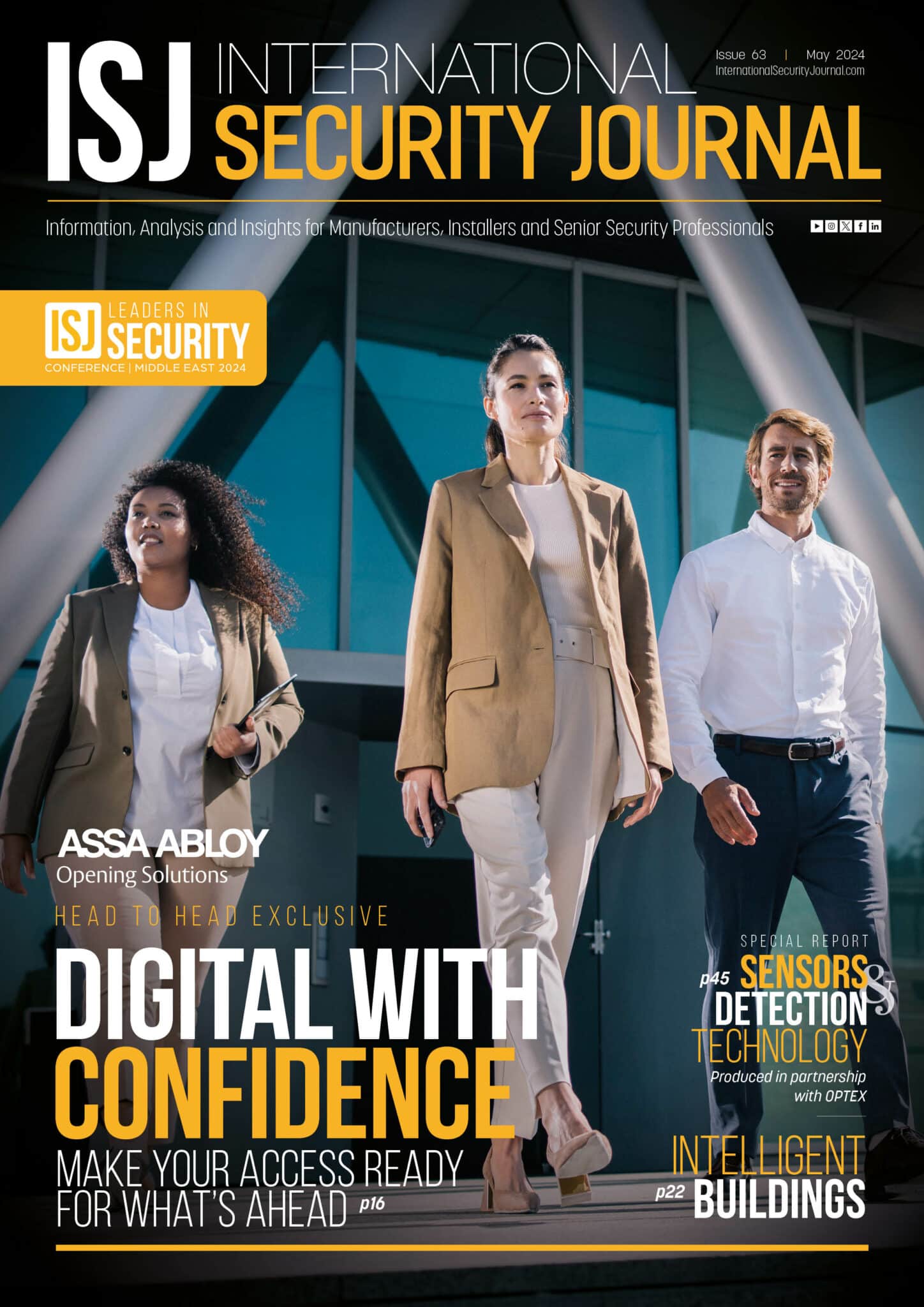The global trend shaping secure and efficient workplaces


James Thorpe
Share this content
ISJ hears from Sanjit Bardhan, Vice President & Head of Global Mobile Business, HID.
The rise of smartphones and mobile wallets has fundamentally changed how we interact with workplaces and services globally.
This trend is amplified by the growing adoption of these technologies across more digitally native generations.
And, because people always have devices with them, accessing places and moving around different parts of the building through them makes sense.
In fact, there is remarkable synergy between digital wallets and mobile access solutions used in offices, universities and a wide range of other facilities.
That’s because digital wallets are not used for just payment transactions anymore; they can hold medical prescriptions, travel documents, driver’s licenses, ID cards, insurance information and employee badges.
With employee badge in digital wallets, employees can access office doors, elevators, turnstiles, multifunction printers and much more using just their smartphones or smartwatches.
Employee badge in digital wallets integrates into existing access control systems, is simple to distribute and manage and takes advantage of the built-in security features of the devices.
Article Chapters
ToggleUnlocking the potential
Maximising this synergy requires a flexible, scalable and future-ready security infrastructure built on a physical access control system (PACS) solution that includes robust credential technology, Bluetooth Low Energy (BLE) and NFC-enabled readers and cloud-based software.
This empowers organisations to integrate the system with existing workspace apps and/or mobile wallets. The employee ID via digital wallets offers companies several benefits at once, including:
- Enhanced security – the encryption technologies used in digital wallets ensure the secure storage and transmission of digital credentials. Additionally, the biometric authentication feature embedded in wallet apps adds an extra layer of security to verify the user’s identity
- Frictionless experience – with NFC technology, users can access places quickly and safely
- Streamlined security – with badges in digital wallets, key distribution and management across the company is streamlined; there is no need to print keys for employees or guests
- Convenience and uninterrupted access – if the user’s mobile device needs a charge, their badge will still work for up to five hours with power reserve/saver mode
- Protection on lost or stolen devices – if the device is lost or stolen, a locator app allows users to lock or locate the device as well as suspend or remotely erase their badge
- Reduced costs – integrating mobile access with digital wallets eliminates the need for producing and distributing physical badges, reducing associated costs and aligning with sustainability goals by reducing plastic waste
- Improved efficiency and scalability – remote management and updating of credentials is possible through the cloud. Advanced mobile access providers offer modular, multilayered secure infrastructure that is also validated by certifications
Building an open foundation
To fully leverage the benefits of a cloud-based access control system that integrates both physical and digital access, a foundation built on open architecture is essential.
This open architecture approach emphasises the use of security standards and protocols throughout the system, such as the Open Supervised Device Protocol (OSDP).
OSDP ensures secure and smooth communication between readers and controllers, a critical element for robust cloud-based security.
Open architecture also allows for the integration of new technologies and security advancements, keeping the system adaptable in a constantly evolving landscape.
Finally, open architecture allows for vendor independence, so organisations do not have to be locked into a single vendor’s ecosystem.
This empowers them to choose solutions that match needs and budgets.
And, few manufacturers are able to empower partners and developers to unlock the potential of cloud-based access control.
For IT departments or security teams, this means they can easily issue or revoke access, update access permissions and monitor activity, reducing administrative overheads and ensuring efficient access control management from a central hub.
The administrator can send an email invitation to access the premises and issue credentials from an easy to use online platform, unlike traditional access cards, which require a dedicated person to carry out the task of issuing physical credentials.
With mobile access, everything is done remotely.
It’s quicker, cheaper, scalable and much more convenient.
Prerequisites for mobile access
As the world embraces mobile wallets and the convenience of contactless access, selecting the right mobile access solution becomes crucial.
Here are some key considerations to keep in mind when procuring a mobile access solution:
- Ongoing threat prevention – organisations need to be able to implement security upgrades as needed, without the need for a complete system overhaul
- Robust encryption – mobile IDs must be encrypted using industry standard algorithms like AES-128 and ideally stored on the reader’s Secure Element (SE) for added security
- International compliance – compliance with international standards such as ISO 27001, System and Organisation Controls 2 (SOC 2) and the European Union’s General Data Protection Regulation (GDPR) ensures data privacy and security across regions and markets
- Universal compatibility – mobile IDs should be available for use on both iOS and Android devices, being able to integrate with existing building management system apps and wallets
- Agnostic support – readers should support various communication protocols like BLE, NFC and physical smart cards. OSDP support enables smooth adoption of future technologies
- Interoperable credentials – credential data should be encoded in a format compatible with different vendors’ systems for seamless integration with existing access control technologies
Digital transformation and security
The property management industry pioneered the use of mobile wallet employee badges, particularly for flexible work arrangements.
To bring successful projects up to speed, smart building technology providers and software developers are integrating mobile access into the building’s management system.
Recent projects successfully utilising digital wallets – in this case Apple Wallet – include the 7 World Trade Center office building in New York City, London’s tallest skyscraper, 22 Bishopsgate and Sharry’s Prague Headquarters.
Other rollouts across the US and Europe are underway in several countries.
Ultimately, a mobile-ready, adaptable infrastructure enhances security and sustainability, creating smarter and more efficient buildings and delivering a superior user experience on a global scale.


